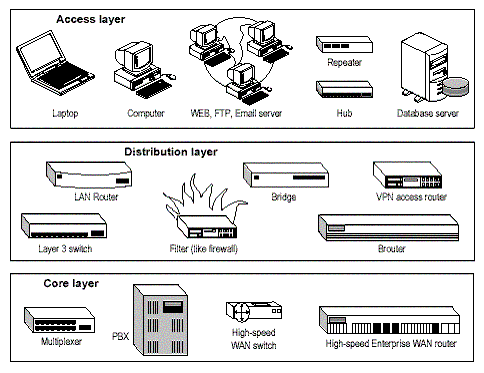
The Cisco Three-Layered Hierarchical Model |

 |
SemSim.com provides training resources for Cisco certification exams: CCIE, CCNP, CCNA,
CCDP, CCDA. It offers FREE learning resources to students such as study guides and router simulation labs at it's online learning center located at: http://www.semsim.com/ccna/learn.html http://www.SemSim.com : Making Cisco cetification easy! |
| Sponsors |
 
|
|
|||||||||